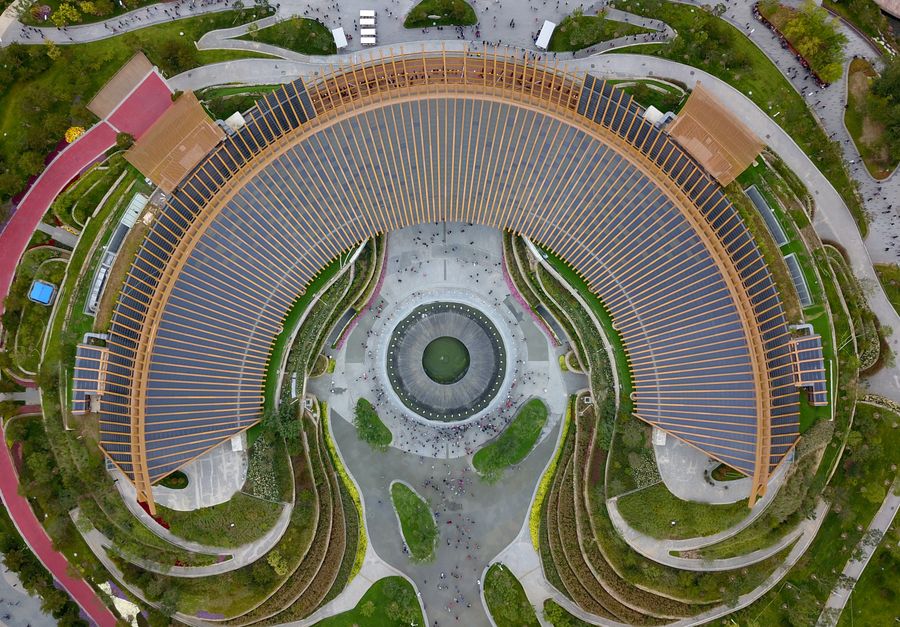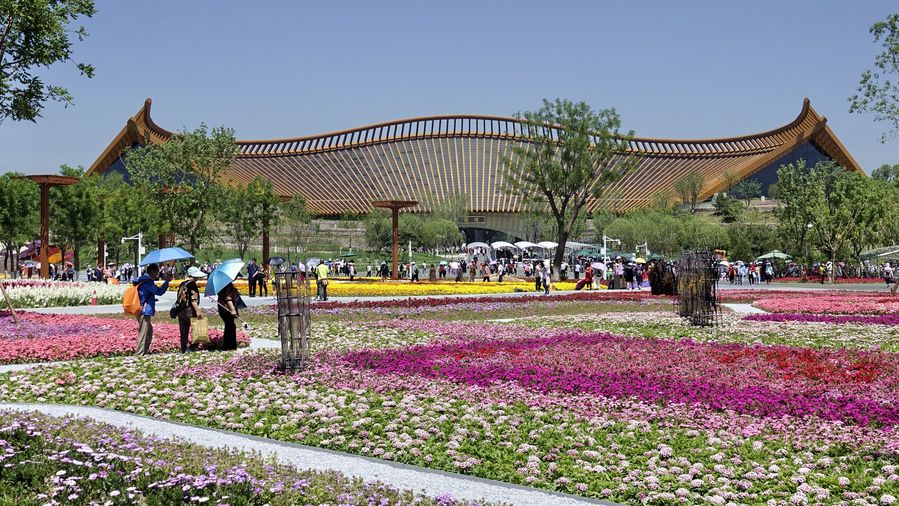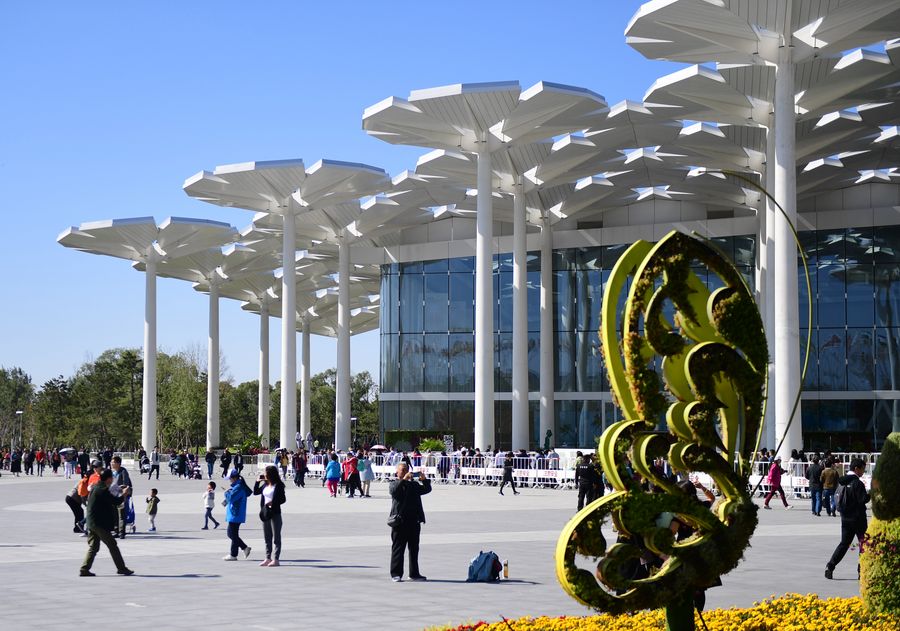
Aerial photo taken on Oct. 6, 2019 shows the China Pavilion at the International Horticultural Exhibition in Yanqing District of Beijing, capital of China. (Xinhua/Zhang Chenlin)
China joined the International Union for the Protection of New Varieties of Plants (UPOV) in 1999. Since then, Chinese research institutes, flower enterprises and many folk breeders have been committed to the cultivation of new varieties, ranging from chrysanthemum, rose, rhododendron to magnolia with patents obtained in the United States, the European Union and Japan, said Zhao Shiwei, chief engineer of the Beijing Academy of Landscape Architecture.
BEIJING, Oct. 10 (Xinhua) -- Drawing more than nine million visitors in 162 days, the just concluded International Horticultural Exhibition 2019 Beijing was a vivid reflection of China's blooming floral industry in recent years.
Ye Dahua, deputy head of the expo's coordination bureau, said the horticulture expo will be remembered for its many "rare plants and characteristic gardens."
Among the more than 2 million plants exhibited, there were more than 20,000 new varieties and products. A large number of them were quality varieties with intellectual property rights that were independently cultivated before being unveiled at the expo, Ye said.
"I remember at the 1999 International Horticultural Exposition held in Kunming, capital of southwest China's Yunnan Province, Phalaenopsis, or butterfly orchid, was still considered a novel species, but now it is a common household flower," said Zhao Shiwei, chief engineer of the Beijing Academy of Landscape Architecture.
In the China pavilion of the Beijing expo, a six-meter-high three-dimensional ecological wall based on the scenery of Anji in east China's Zhejiang Province is arranged with green plants, which were kept alive for more than five months, said Guo Jia, deputy head of the horticulture department of the bureau.

Tourists visit the China Pavilion at the Beijing International Horticultural Exhibition in Beijing, capital of China, May 23, 2019. (Xinhua/Li Xin)
"Many flower arrangements at the Beijing expo were realized with new technologies in flowering regulation, vegetation selection and three-dimensional greening," Guo said.
The Kunming expo helped nurture flower consumption in China, while the Beijing expo will further boost the innovation, research, trade and logistics in the whole industrial chain of the floral business to help China seek a stronger position in the world market.
China joined the International Union for the Protection of New Varieties of Plants (UPOV) in 1999. Since then, Chinese research institutes, flower enterprises and many folk breeders have been committed to the cultivation of new varieties, ranging from chrysanthemum, rose, rhododendron to magnolia with patents obtained in the United States, the European Union and Japan, Zhao said.
Scott Salter, chief scientist of Lynch Group, an Australian floral developer, said at the expo the company has over 10 years of experience in China, witnessing the country's floral market growth.
"When we first came to China, we only sold some rose species, but now we sell dozens of varieties of floral plants. Every day we see new customers here. The market potential is huge," said Salter.

Tourists visit the International Pavilion at the Beijing International Horticultural Exhibition in Beijing, capital of China, Oct. 7, 2019. (Xinhua/Zhang Chenlin)
Beijing Green Garden Group Co., Ltd. is the main supplier of the floral exhibits in the host city of Beijing.
Lin Qiaoling, board chairperson of the company, said over the past decade, the company's business has expanded from simple flower sales to providing customized flower arrangements.
The company's flower output value has increased from less than 6 million yuan (843,400 U.S. dollars) in 2011 to 360 million yuan in 2018, she said.
China has become the word's biggest flower-producing country as well as important flower consumer and trader, according to Jiang Zehui, president of the China Flower Association. In 2018, China had a flower cultivation area of 1.63 million hectares.
The fast development of China's e-commerce and courier sectors has greatly boosted fresh flower consumption. During this year's Valentine's Day, China's online retailing platform Taobao saw flower orders jump 69 percent year on year, with 500,000 fresh-cut roses, tulips and other flowers grown in Yunnan sold.
The expo site, which sprawls over an area of 503 hectares in Beijing's northern suburban district of Yanqing, will now be used as an education base of ecological culture, according to Zhou Jianping, executive deputy director of the expo's coordination bureau. ■



